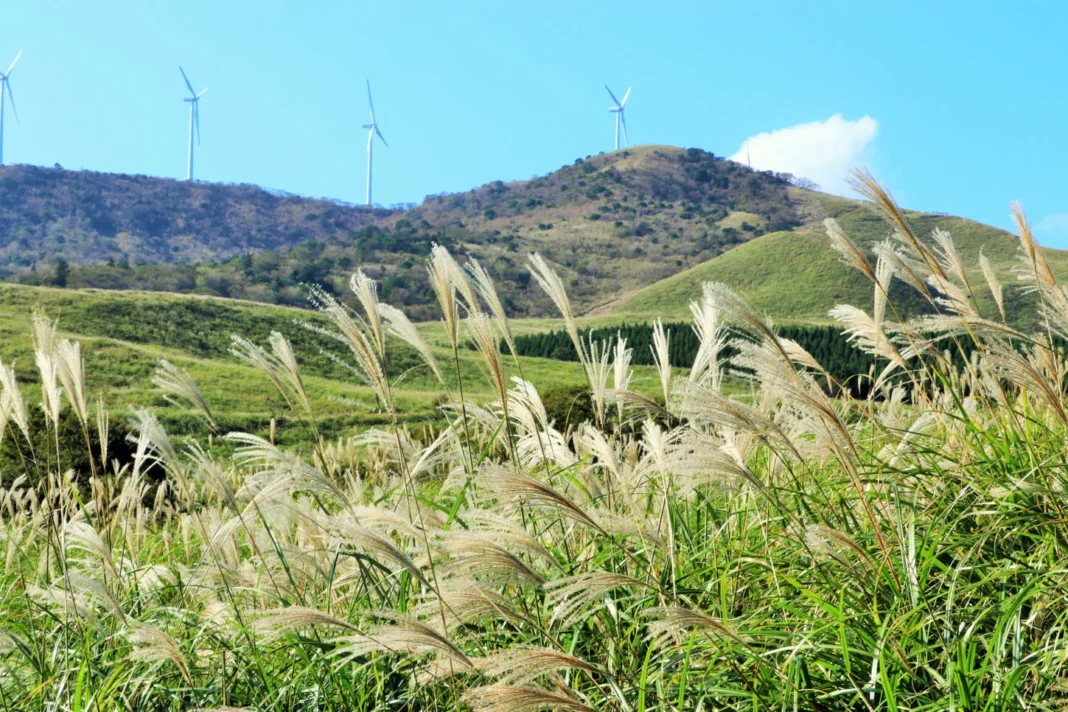Table of Contents
We’ve entered the season when the wind blowing across your cheeks feels pleasant. You can also feel the changing of the seasons from the Izu landscape. Today we would like to show you a stroll through Inatori that is suitable for autumn, the season of leisure and food.
Enjoy the spectacular views at the “Autumn Susuki Event” in the Inatori Hosono Plateau, Higashiizu.
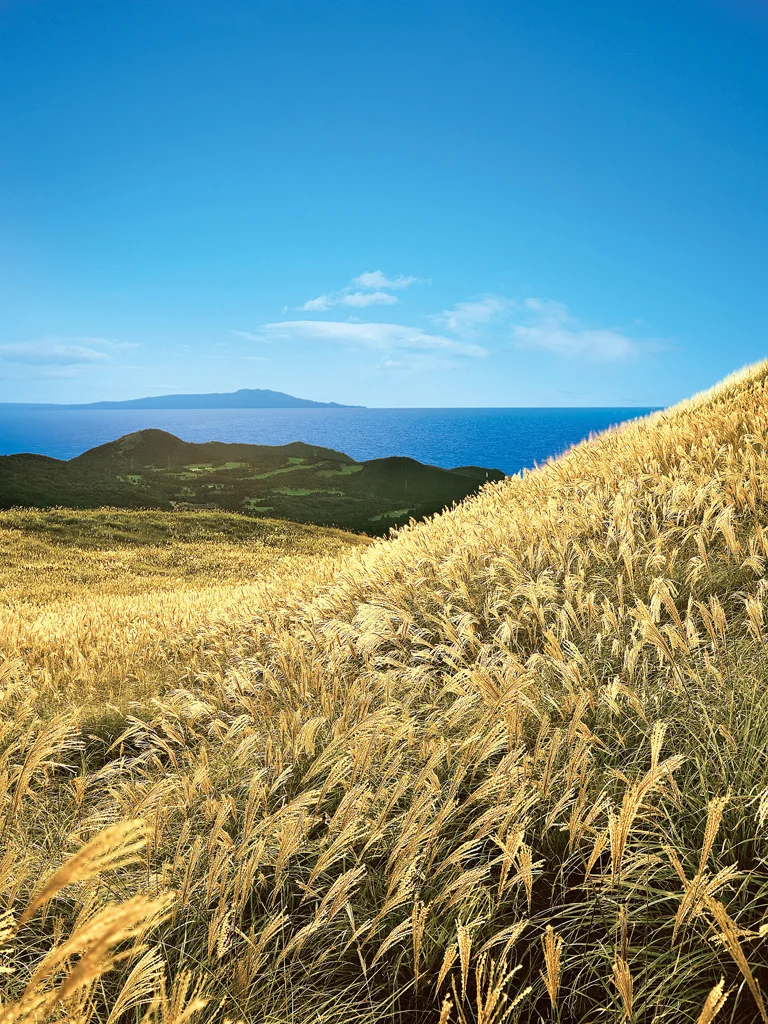
The Autumn Susuki Event is held every year from October to November in the vast 125-hectare susuki fields (26 times the size of the Tokyo Dome) in the mountains of Inatori. The spectacular views of the expansive susuki fields, and the Sagami Bay and Izu Islands below are well worth seeing! Why not take a stroll through the golden susuki fields spreading throughout the area?
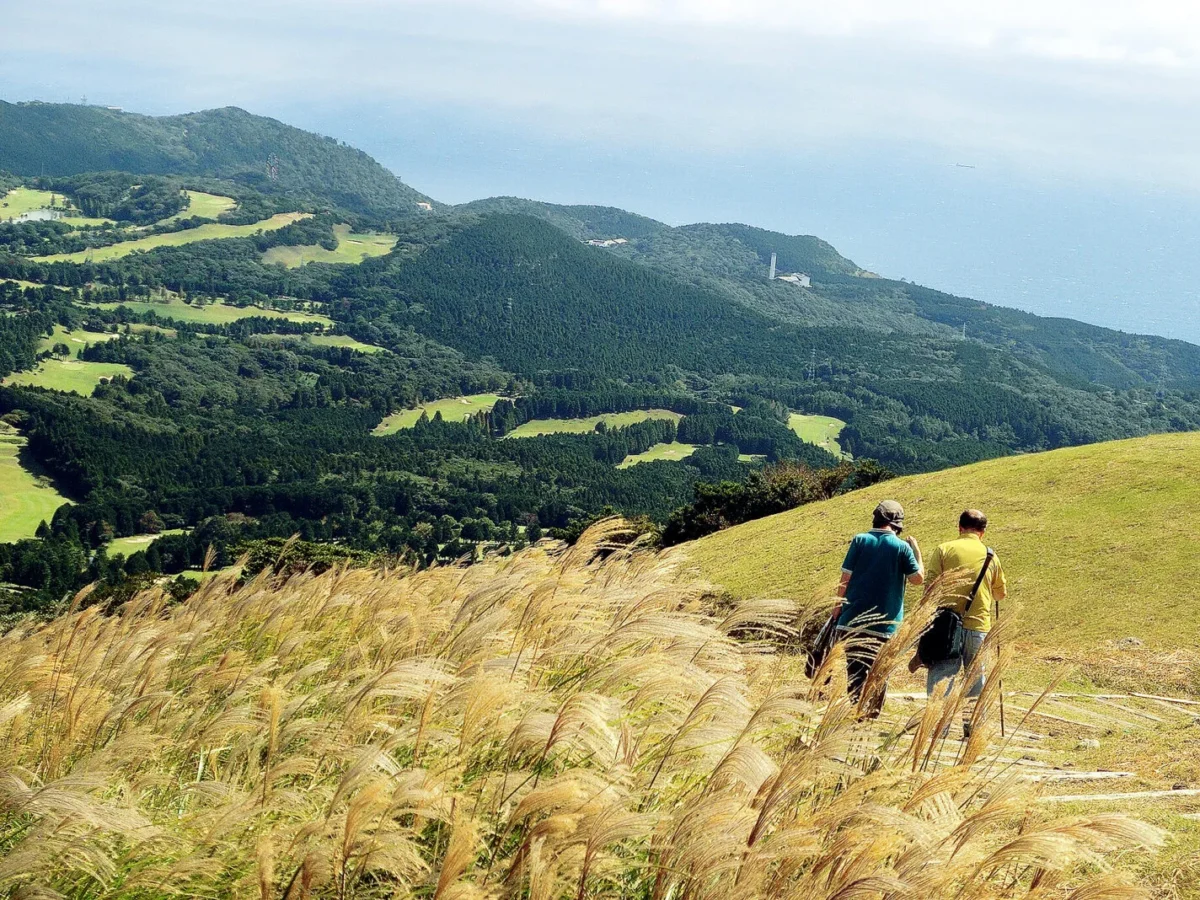
No general vehicles are allowed during the event, so after registration, visitors will be given an “Event & Walking Map” to explore the fields on foot (entrance fee required).
There are several walking routes, including a one-lap 1.5-kilometer route (about 25 minutes) and a 2-hour route to the top of Mount Misuji, so please choose a route that suits your physical fitness level and time.
The site also has four marshlands (Nakayama Marsh No.1, Nakayama Marsh No.2, Momono Marsh, and Shibahara Marsh) that have been designated as cultural assets by Shizuoka Prefecture, where visitors can sometimes observe rare wetland plants such as the Eleorchis japonica and Asian pogonia.
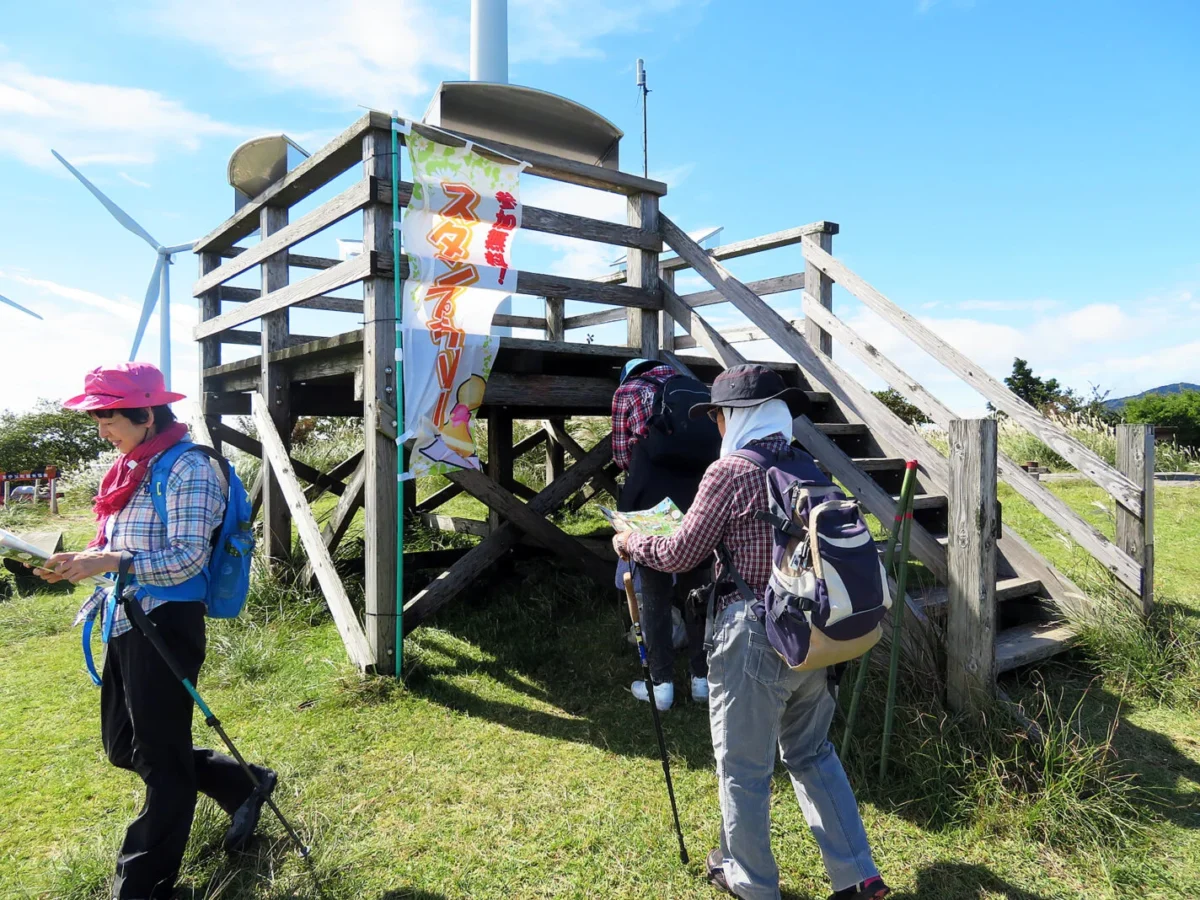
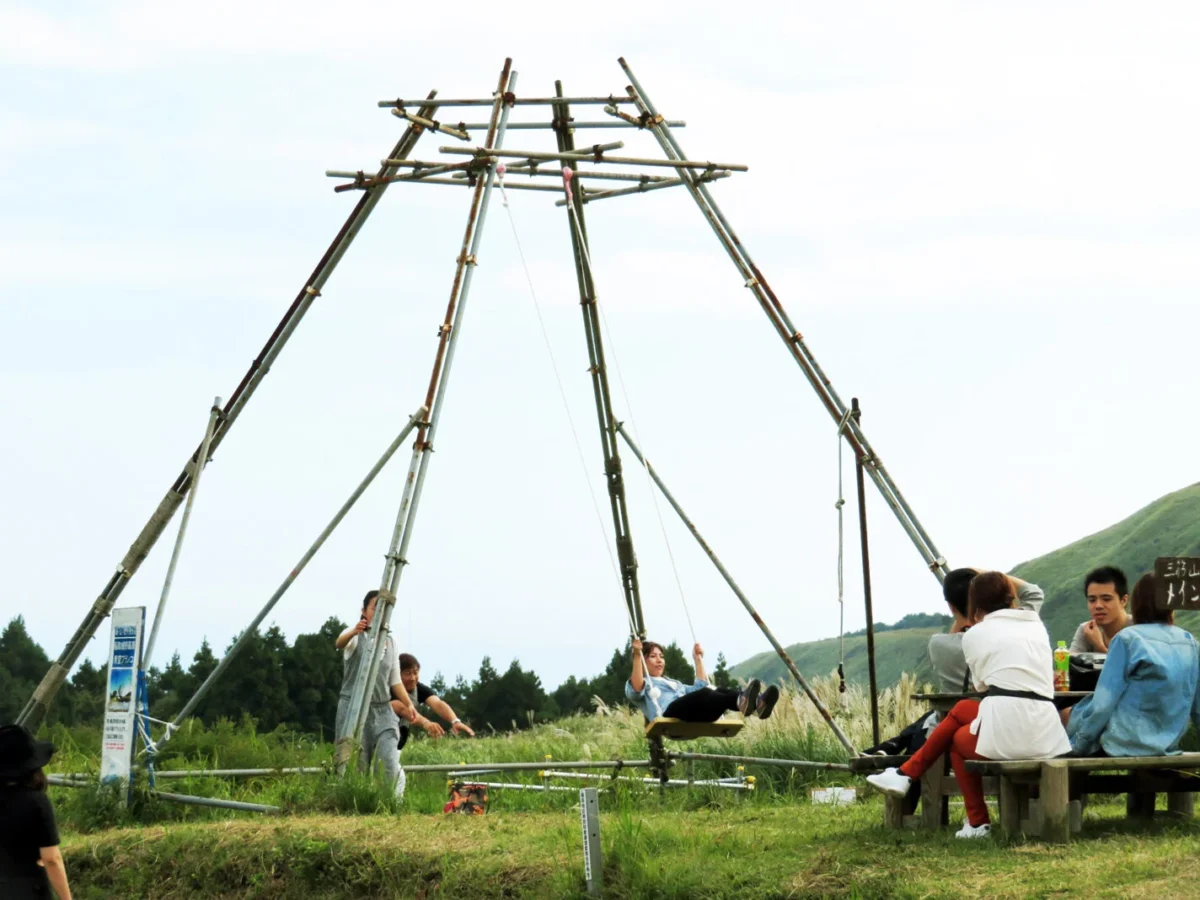
At the event venue, there is a stamp rally, a Hosono Plateau swing that offers a view of the sea, free rentals of playground equipment such as sleds, badminton sets, and balls, and light snacks and beverages are available on holidays.
The map of Inatori Hosono Plateau
Kinmedai is a popular fish of Inatori. Enjoy the “Inatori kinme,” the local brand-name fish

If you get hungry after taking a stroll on the plateau, try the “Inatori kinme,” a specialty of Inatori, to recharge your energy. Inatori Port is a historic town that specializes in kinmedai fishing. About 30 boats head to the fishing grounds and catch the kinmedai one by one using vertical longlines, in which 40 hooks are attached to one trap.
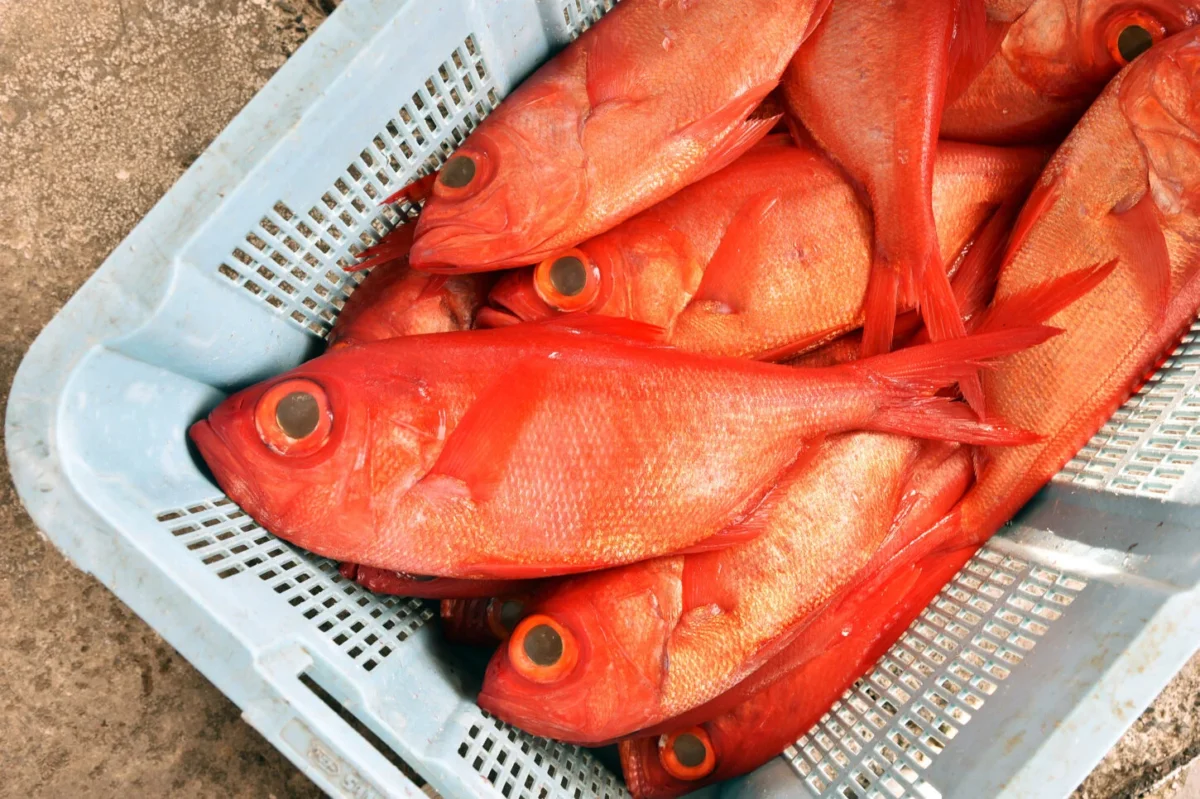
Vertical longlining causes less damage to the fish, so the unloaded fish are preserved beautifully.
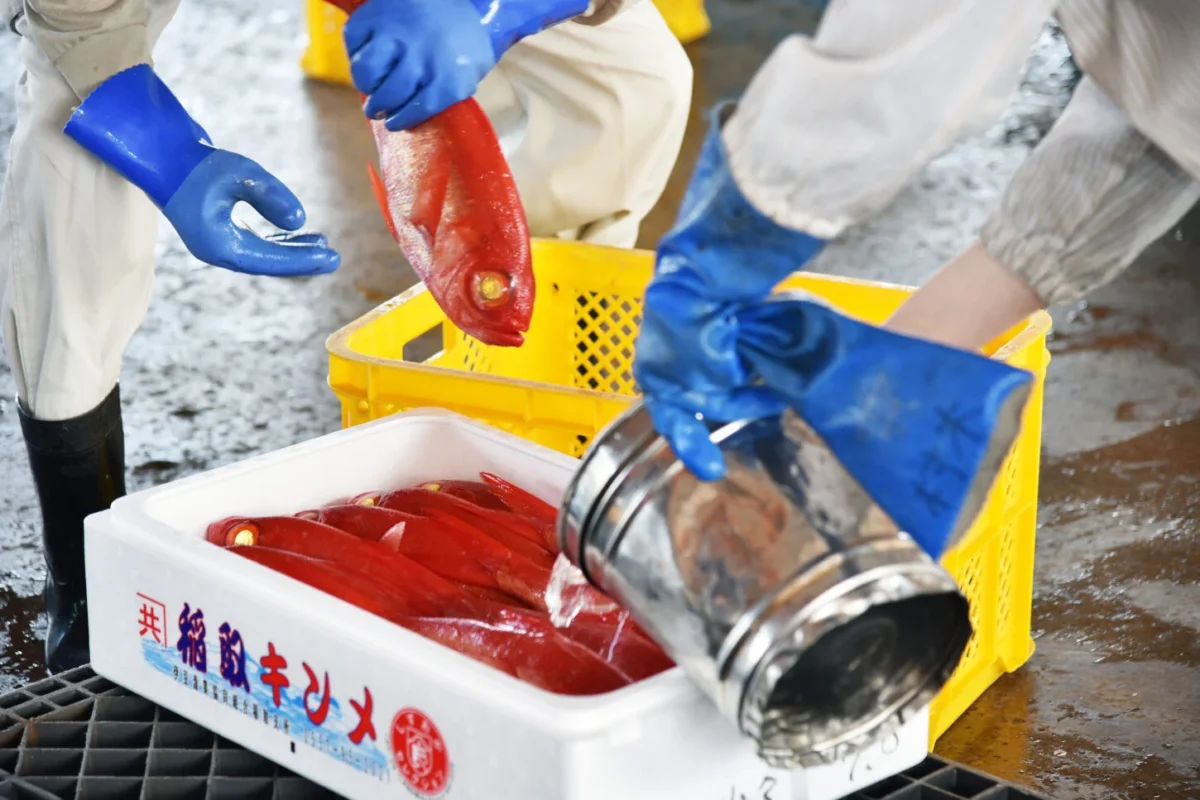
The boats leave early in the morning and all the fishermen return to the fishing port by noon, where the fish are immediately unloaded, sorted, and packed, and by the next morning, they are lined up at the consumer market in Odawara and other areas. Inatori kinme is sold at a high price in the market. The best place to taste it is here!
Restaurants where you can taste fresh Inatori kinme
Kinme Tokoro Naburatoto
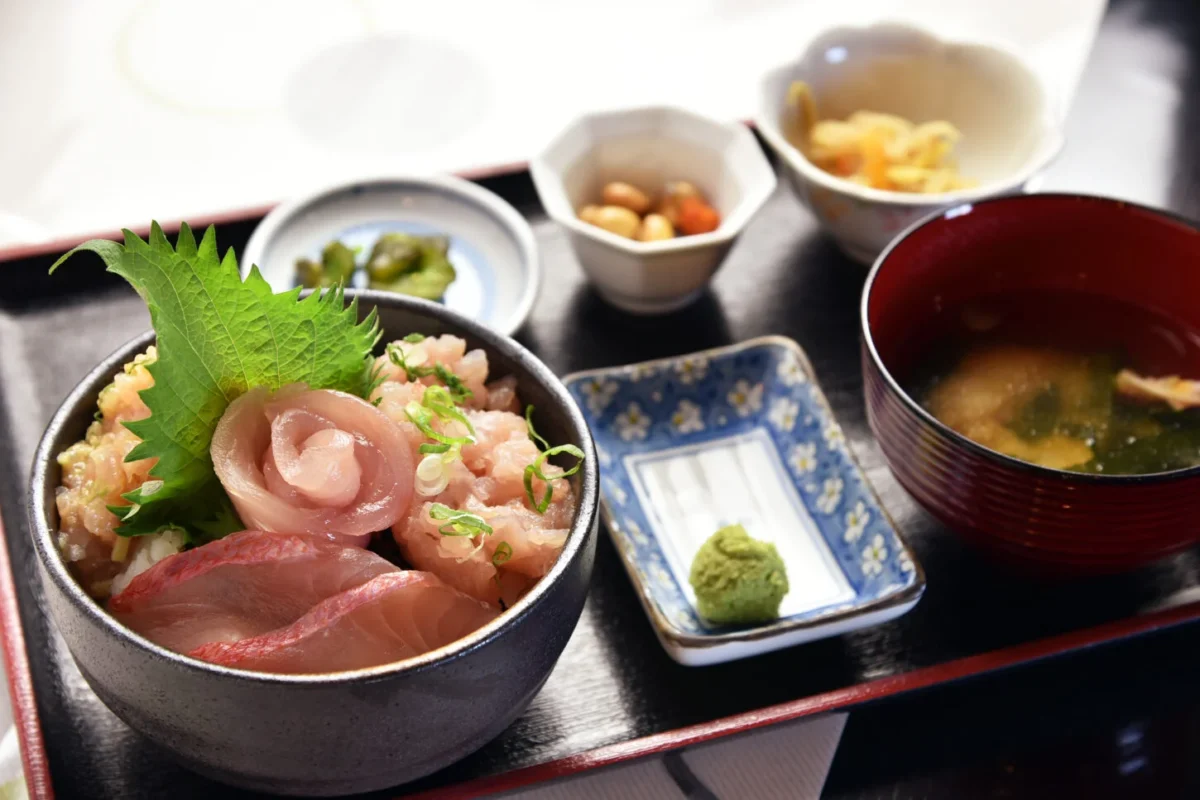
“Naburatoto,” located right in front of Inatori Port, specializes in kinmedai dishes. Since the restaurant was opened, it has been dedicated to serving “Inatori kinme” and purchases it directly from the Inatori Branch of the Izu Fisheries Cooperative Association. The fatty kinmedai is served in a variety of ways, including braised, sashimi, pickled, seared, sanga-yaki (grilled fish cakes), and namero (minced fish mixed with spices and seasonings). The menu offers a variety of dishes that allow you to fully enjoy the deliciousness of Inatori kinme. The “kinmedai donburi” pictured here is a set meal that is truly all about kinmedai, offering three kinds of dishes at once including sashimi, negitoro, and namero.
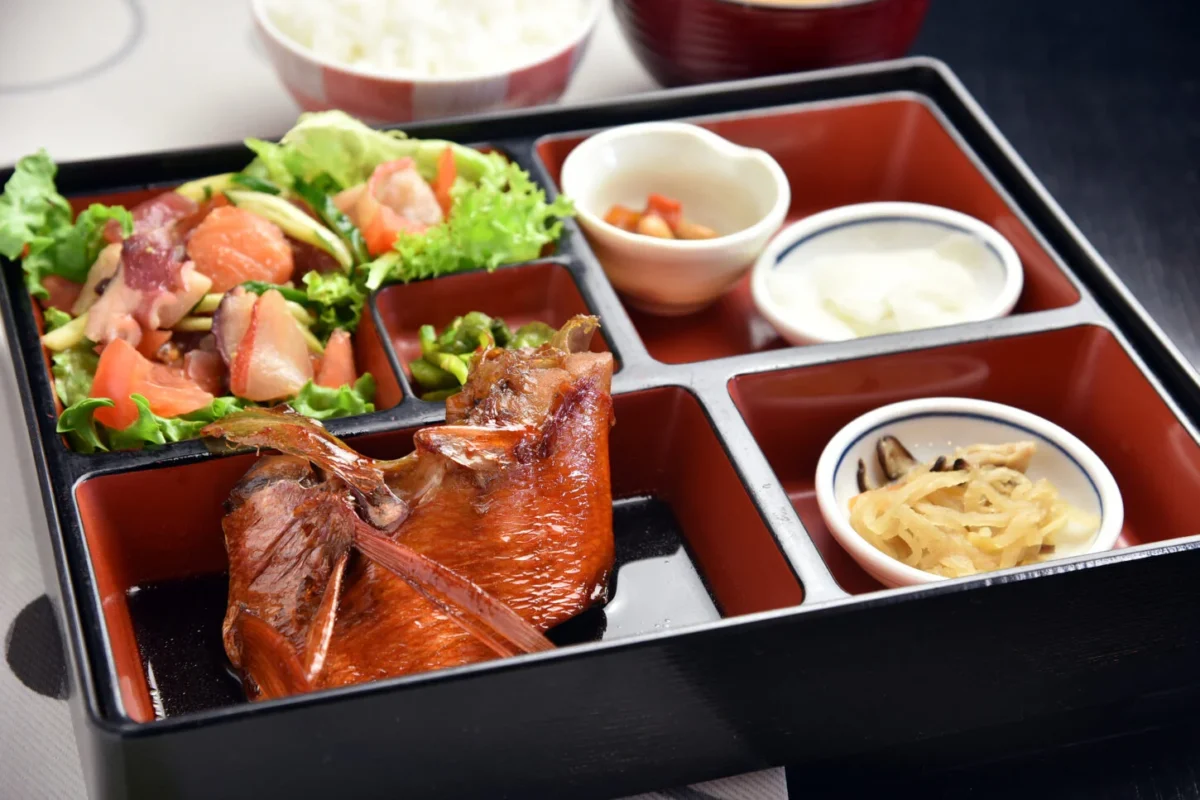
The meat of the sweet and spicy “braised kinmedai set” is thick and surprisingly fluffy. It comes with a very satisfying portion of salad with kinmedai sashimi, a side dish, and miso soup.
The restaurant may be closed when there are no fish in stock, so it is safe to check before visiting.
The map of Kinme Tokoro Naburatoto
While you’re here, share the taste of Inatori with souvenirs
Inatori agricultural and fishery marketplace “Korashie”
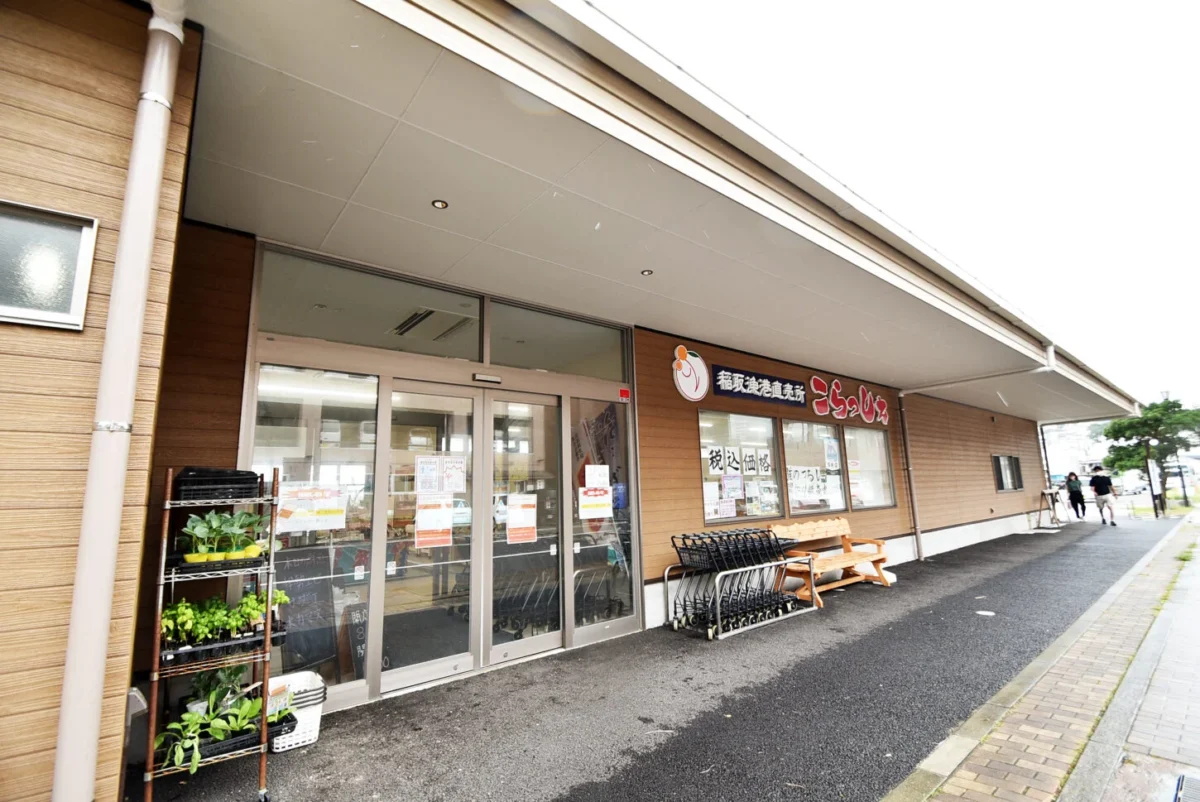
“Korashie,” a direct sales shop that was set up at the Inatori Port in cooperation with the local fishing port and agricultural organization, offers fresh seafood caught in set nets at Kitagawa Port and Yatsu Port, including “Inatori kinme,” as well as a wide variety of certified regional products and specialties, including vegetables and fruits grown by local farmers, and well-known sweets made with New Summer oranges.
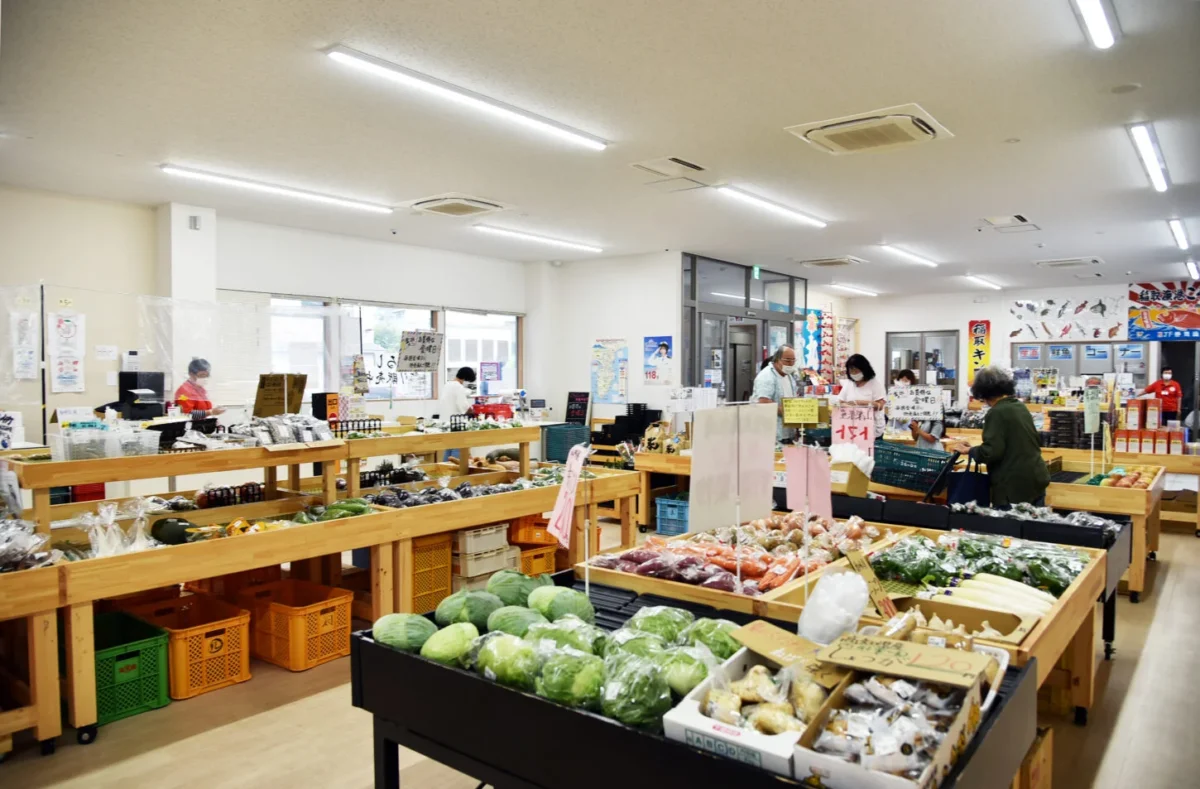
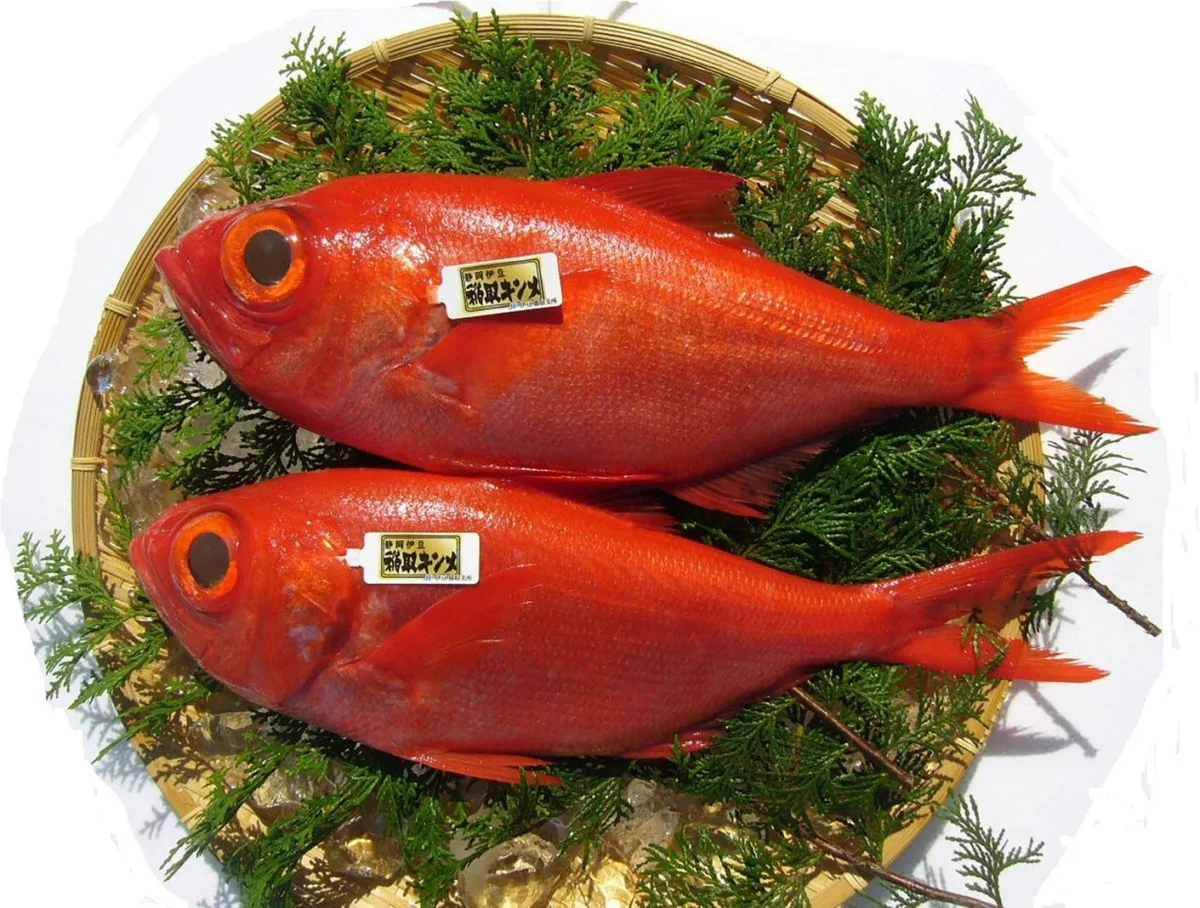
The types of fresh fish on display at the store vary depending on the weather, season, and day, but on a good day, there can be around ten different kinds of fish on display. Of course, Inatori kinme is also available as raw, boiled, or dried fish. A piece of dried fish weighs 500 to 600 grams, and a piece of boiled fish weighs 700 grams, making them perfect as a souvenir or to eat at home! The vacuum-packed braised fish is easy to prepare by simply boiling it in hot water (the Inatori kinme can be prepared by filleting it into three slices.) This is the place to go if you want to buy Inatori kinme which is rarely distributed in Tokyo.
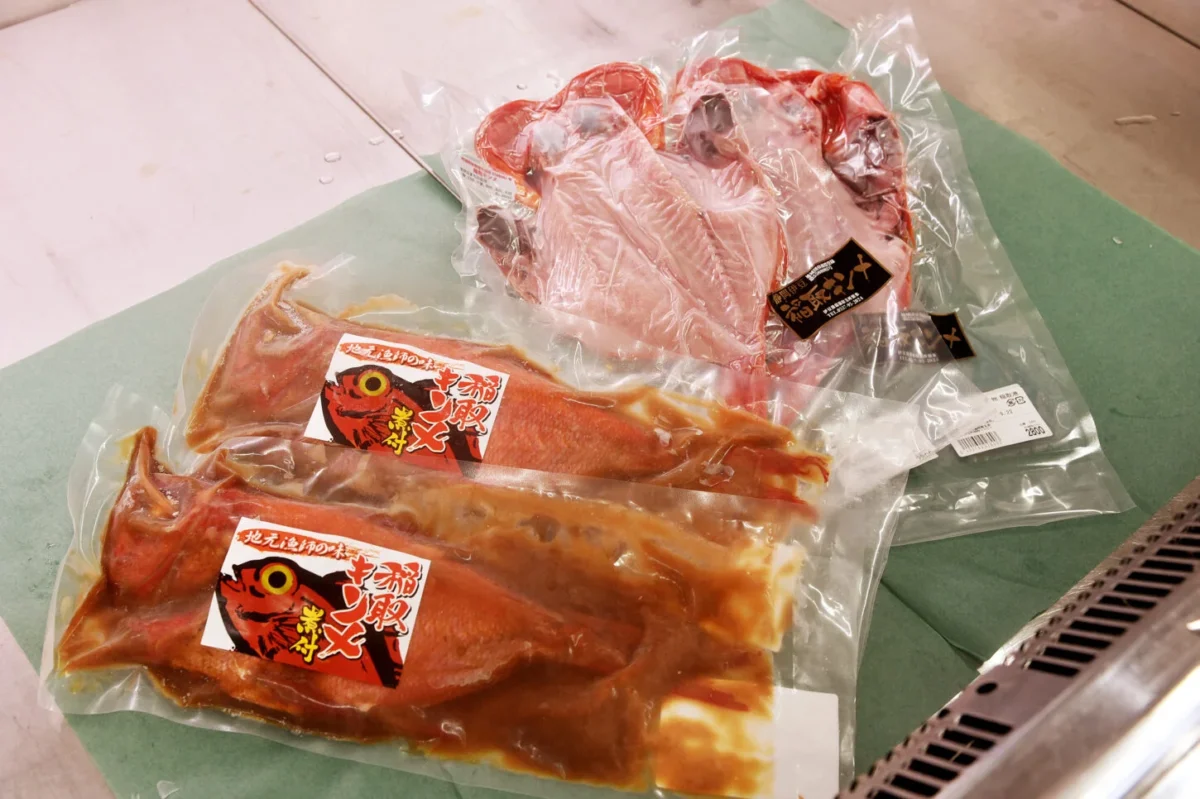
In the parking lot of the Higashiizu Town Hall located across the street, a “port morning market” is held every Saturday, Sunday, and on national holidays, and local fishery companies, fruit and vegetable stores, farms and confectionary stores open up stalls selling dried fish, vegetables, fruits, doughnuts, pickles and other specialty products produced in Inatori.
In addition, the freshly cooked kinme kamameshi is another excellent dish. You’ll also be happy to hear that dish comes with a free side of kinmedai fishhead soup. We recommend visiting the port morning market together with Korashie.
The map of Korashie
Closing
Today we introduced Inatori in autumn, but as the birthplace of “tsurushi-hina” (hanging doll ornaments), the area is very famous for the “Hinano Tsurushi Kazari Festival” held every year from late January to late March.
Don’t miss the approximately 380 hina dolls and vine decorations displayed on the 118 steps of Susanoo Shrine. For visitors, Inatori in the early spring is also a great place to have a lot of fun.
